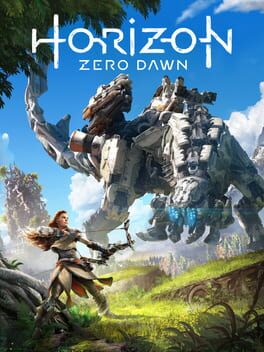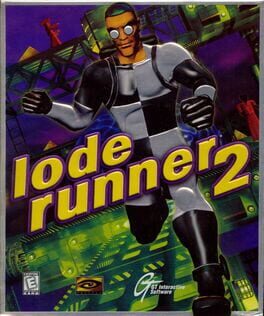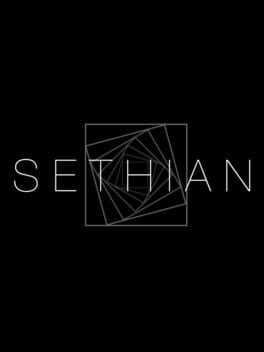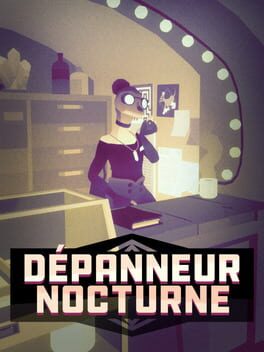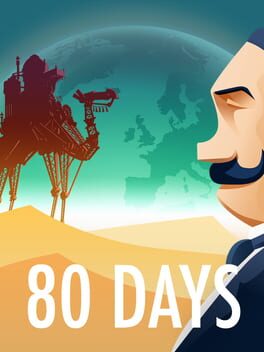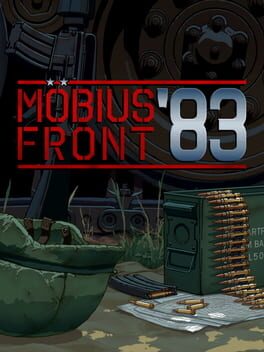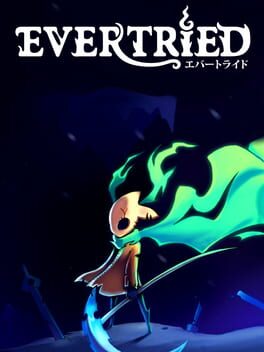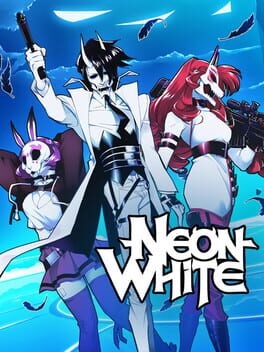nex3
BACKER
2022
Hands down Sam Barlow's best work so far. Switching from textual to visual searches is a brilliant move in conjunction with a shift in storytelling from the literal to the symbolic, drawing the player's attention over and over again to the images that are shared across the stories. The mechanics themselves blur the line between the sign and its meaning, linking a picture at now to another picture and now to the person the picture depicts, harmonizing with the thematic focus on the dissolving boundary between actor, role, and audience.
Immortality is Lynchian, in the sense that it uses a nexus of symbols and raw emotion to argue that the banal humanity of everyday life affects and reflects the grand arcs of humanity. Although the initially-obscure narrative does eventually take clearer form once you dive deep into the depths of the game, it remains resolutely unwilling to sacrifice the breadth of its symbolic resonance at the altar of "lore" by answering every question the player has. It is a game that sticks in one's mind and demands to be mulled over again and again, rewarding this thought with glimmers of insight that feel deeply earned.
Immortality is Lynchian, in the sense that it uses a nexus of symbols and raw emotion to argue that the banal humanity of everyday life affects and reflects the grand arcs of humanity. Although the initially-obscure narrative does eventually take clearer form once you dive deep into the depths of the game, it remains resolutely unwilling to sacrifice the breadth of its symbolic resonance at the altar of "lore" by answering every question the player has. It is a game that sticks in one's mind and demands to be mulled over again and again, rewarding this thought with glimmers of insight that feel deeply earned.
I picked this up for the nostalgia trip—I came back to it over and over again as a young child but never managed to make much headway on the riddles. As an adult, though, in addition to being endlessly charmed by the CGI/FMV hybridization, I was deeply impressed by how thoughtfully designed the game is.
The player is challenged to solve seven scientific riddles in order to satisfy a rogue AI and persuade it to divert a meteoroid before it collides with earth in five days' time. Doing so involves a point-and-click mixture of learning scientific facts and applying them to interactive puzzles, eventually yielding some object that you can submit as a riddle solution.
On the surface this is fairly standard mid-90s fare, although it's clear that the creators had a lot of fun cramming it full of goofs, science facts, and references to the Bill Nye show. But there's also a keen eye here towards the way the player approaches the game: although Nye Labs is fairly open to exploration, the puzzles are set up to gently guide you through in a particular order, gating challenges on one another or just on exploration through the space.
It's even clear that my childhood mode of play, to fail over and over again to actually stop the meteoroid, was an intended pattern. Very little in the game is mechanically off-limits. Instead, it's almost exclusively blocked by knowledge. Once you're aware of how to solve one or another riddle (or even enter the one explicitly locked area of the lab), you can do it instantly in your next session. The game expects the player to learn over time not just in terms of science but in terms of the space it creates.
The player is challenged to solve seven scientific riddles in order to satisfy a rogue AI and persuade it to divert a meteoroid before it collides with earth in five days' time. Doing so involves a point-and-click mixture of learning scientific facts and applying them to interactive puzzles, eventually yielding some object that you can submit as a riddle solution.
On the surface this is fairly standard mid-90s fare, although it's clear that the creators had a lot of fun cramming it full of goofs, science facts, and references to the Bill Nye show. But there's also a keen eye here towards the way the player approaches the game: although Nye Labs is fairly open to exploration, the puzzles are set up to gently guide you through in a particular order, gating challenges on one another or just on exploration through the space.
It's even clear that my childhood mode of play, to fail over and over again to actually stop the meteoroid, was an intended pattern. Very little in the game is mechanically off-limits. Instead, it's almost exclusively blocked by knowledge. Once you're aware of how to solve one or another riddle (or even enter the one explicitly locked area of the lab), you can do it instantly in your next session. The game expects the player to learn over time not just in terms of science but in terms of the space it creates.
2020
There are things this game does that I actually really love. It has moments of a Gnog-like playfulness where it rewards a player's organic exploration of the surface of the game (roll a big snowball! surf on a surfboard!). At times it really seems to prioritize the texture of play as a way to showcase the haptic capabilities of the new controller. The monkey suit could be an entire little game on its own.
The problem is that these moments of genuine joy are drowning in a pro forma V I D E O G A M E that's full of enemies, platforming, and levels. What's worse, the entire thing is just a huge advertisement for the PS5. Its existence on the console by default and for free casts small and playful games as valueless relative to the AAA content behemoths that are the PlayStation's stock in trade these days, and its ceaseless references to Sony's history are heartbreaking in light of its destaffing of the Japanese teams that made the very games it lionizes.
More than anything, Astro's Playground makes me feel melancholy. It's a glimpse at a crossroads where the route has already been chosen, and so in a way it's a eulogy for the path the industry refused to take.
The problem is that these moments of genuine joy are drowning in a pro forma V I D E O G A M E that's full of enemies, platforming, and levels. What's worse, the entire thing is just a huge advertisement for the PS5. Its existence on the console by default and for free casts small and playful games as valueless relative to the AAA content behemoths that are the PlayStation's stock in trade these days, and its ceaseless references to Sony's history are heartbreaking in light of its destaffing of the Japanese teams that made the very games it lionizes.
More than anything, Astro's Playground makes me feel melancholy. It's a glimpse at a crossroads where the route has already been chosen, and so in a way it's a eulogy for the path the industry refused to take.
2017
Agonizingly AAA. Surprisingly racist, even for mainstream Western media. No idea how to motivate a character beyond "my loved one is dead". Bottomless disdain for the player. But damned if they didn't make fighting a robot t-rex pretty fucking sick. The combat is the real selling point, and between setting up traps, capitalizing on weak spots, and carefully choosing skills it made me feel consistently clever.
I can't fathom how embarrassing this must have been to release next to Breath of the Wild though. A game with graphics a full console generation worse than this that nevertheless runs circles around its open world design. Even knowing this was pre-BotW I keep trying to go to spots that look interesting on the map and being crushed when there's nothing there or, worse, it's totally inaccessible.
I can't fathom how embarrassing this must have been to release next to Breath of the Wild though. A game with graphics a full console generation worse than this that nevertheless runs circles around its open world design. Even knowing this was pre-BotW I keep trying to go to spots that look interesting on the map and being crushed when there's nothing there or, worse, it's totally inaccessible.
1998
This game is very cool, and if I'd owned it in 1998 when I had a boundless fountain of time and patience to pour into any game I managed to get my hands on I would have absolutely adored it. The PC branch of the Lode Runner family tree zooms in on the puzzleyness of the game rather than the action elements, and this entry takes those puzzles into three dimensions on an isomorphic three-axis grid.
It's hard to overstate how appealing the graphics of this game still are. Sprite graphics make lavish detail economical to a degree that 3D games can never be, and the isometric perspective gives this a dimensionality that side-view graphics always lack. In combination, these create lush screens bursting with details that beg you to explore, to peek behind a wall or pass through a tunnel or—using Lode Runner's characteristic mechanic—dig for treasure.
As much as I loved looking at the game, I found actually playing it to be a bit stressful. The pure puzzle levels were great, but it wouldn't be Lode Runner without angry guards after your throat, and navigating around them while locked to the grid of tiles was more than I wanted to subject my exhausted 2022 self to for more than an hour or two. This is the game's core mechanical flaw: the isomorphic grid and the player's movement on it are tailor-made for a turn-based puzzle game, but the words "lode runner" written on the box demand obeisance to the series's action roots.
The action history is also apparent in the game's scoring system, which is based on how quickly you complete the level. In a more modern (or less Lode Runner) game, this would probably be a move counter instead... although there's a real brilliance to its inclusion either way. As contemporary players are busy rediscovering with Neon White, the simple addition of a timer and a leaderboard creates a new dimension of puzzles. Rather than finding any route through the level, the goal is to find the best one—quite a challenge when you have a tool as flexible as Lode Runner's dig command. It's a real shame that this game wasn't released in the era of online leaderboards, because I imagine the competition would have been fierce.
It's hard to overstate how appealing the graphics of this game still are. Sprite graphics make lavish detail economical to a degree that 3D games can never be, and the isometric perspective gives this a dimensionality that side-view graphics always lack. In combination, these create lush screens bursting with details that beg you to explore, to peek behind a wall or pass through a tunnel or—using Lode Runner's characteristic mechanic—dig for treasure.
As much as I loved looking at the game, I found actually playing it to be a bit stressful. The pure puzzle levels were great, but it wouldn't be Lode Runner without angry guards after your throat, and navigating around them while locked to the grid of tiles was more than I wanted to subject my exhausted 2022 self to for more than an hour or two. This is the game's core mechanical flaw: the isomorphic grid and the player's movement on it are tailor-made for a turn-based puzzle game, but the words "lode runner" written on the box demand obeisance to the series's action roots.
The action history is also apparent in the game's scoring system, which is based on how quickly you complete the level. In a more modern (or less Lode Runner) game, this would probably be a move counter instead... although there's a real brilliance to its inclusion either way. As contemporary players are busy rediscovering with Neon White, the simple addition of a timer and a leaderboard creates a new dimension of puzzles. Rather than finding any route through the level, the goal is to find the best one—quite a challenge when you have a tool as flexible as Lode Runner's dig command. It's a real shame that this game wasn't released in the era of online leaderboards, because I imagine the competition would have been fierce.
2016
Grant Kuning set himself an impossible task when creating Sethian. Text parser games are already notorious for their inability to handle the full range of sentences players throw their way. One that operates entirely in an unfamiliar alien language is doomed from the start to magnify the inherent obtuseness of the form.
So it is that Sethian teeters between intense hand-holding, telling the player more or less exactly what to enter; and absolute inscrutability, with no clear way forward while the AI rejects even the most reasonable and well-formed sentences. I got the bad ending just by fucking around to see if I could find any sentence the game would recognize, and the good ending only by looking up a walkthrough online.
But despite its inevitable failure, it's hard not to be a bit intoxicated by the sheer ambition of what Sethian attempts to be. Where other games may incorporate decoding a language as a sidequest or step in a puzzle chain, Sethian makes it the heart of the experience. At its best comes close to the excitement of playing Her Story for the first time, feeling your way through a world of possible queries, the only boundary being your own limited vocabulary. It presents a challenge to designers who come after: what can you grow from the seeds that Sethian planted?
So it is that Sethian teeters between intense hand-holding, telling the player more or less exactly what to enter; and absolute inscrutability, with no clear way forward while the AI rejects even the most reasonable and well-formed sentences. I got the bad ending just by fucking around to see if I could find any sentence the game would recognize, and the good ending only by looking up a walkthrough online.
But despite its inevitable failure, it's hard not to be a bit intoxicated by the sheer ambition of what Sethian attempts to be. Where other games may incorporate decoding a language as a sidequest or step in a puzzle chain, Sethian makes it the heart of the experience. At its best comes close to the excitement of playing Her Story for the first time, feeling your way through a world of possible queries, the only boundary being your own limited vocabulary. It presents a challenge to designers who come after: what can you grow from the seeds that Sethian planted?
2020
I've never been good at picking up new languages. I struggle to memorize vocabulary, and conjugations fly right out of my head the moment it's time to form a sentence. Despite spending my entire schooling in various different language courses, I never picked up enough to be even conversant.
This is a source of great dismay to me. I love talking to people, I love reading, and I want to approach other cultures on their own terms rather than asking them to switch to mine. So four years ago I decided to start learning just a little bit of French every day with the help of one of those language apps. Even after COVID swooped in to severely limit my spare energy, I made sure to at least practice a bit every day to avoid losing what progress I'd made.
Dépanneur Nocturne is a bilingual game to a degree that I've never seen a game attempt before. It's not a "choose you language in the settings menu" thing—it's a "step into the dépanneur and the clerk starts speaking French to you" thing. You can respond in French or in English, and that's what she'll use to speak to you unless you ask her to switch. It's exactly like walking into a store in a Francophone region.
Despite four years of fucking around with a language-learning app, I've never had the courage to try actually engaging with Francophone media in its native language. I didn't think I could hack it. Even with frequent dictionary consults, I thought the process would be too slow and painful to actually be engaging.
I would never have gone into a menu and selected "French" for this game. But sure, I can say bonsoir when I walk in the door, just like I'd do in real life. And I found I could mostly make sense of the ensuing conversation. And so it was that I made it through the entire game without ever asking Eugénie to switch to English.
Of course, I had to consult the dictionary plenty of times. But not so much that it kept me from appreciating the cozy atmosphere, the mysterious worldbuilding, and even the charming writing of this game. And through all of that was woven the warmth of the implicit invitation the game provided to play it in its own tongue without judgment or expectation. And that means the world to me.
This is a source of great dismay to me. I love talking to people, I love reading, and I want to approach other cultures on their own terms rather than asking them to switch to mine. So four years ago I decided to start learning just a little bit of French every day with the help of one of those language apps. Even after COVID swooped in to severely limit my spare energy, I made sure to at least practice a bit every day to avoid losing what progress I'd made.
Dépanneur Nocturne is a bilingual game to a degree that I've never seen a game attempt before. It's not a "choose you language in the settings menu" thing—it's a "step into the dépanneur and the clerk starts speaking French to you" thing. You can respond in French or in English, and that's what she'll use to speak to you unless you ask her to switch. It's exactly like walking into a store in a Francophone region.
Despite four years of fucking around with a language-learning app, I've never had the courage to try actually engaging with Francophone media in its native language. I didn't think I could hack it. Even with frequent dictionary consults, I thought the process would be too slow and painful to actually be engaging.
I would never have gone into a menu and selected "French" for this game. But sure, I can say bonsoir when I walk in the door, just like I'd do in real life. And I found I could mostly make sense of the ensuing conversation. And so it was that I made it through the entire game without ever asking Eugénie to switch to English.
Of course, I had to consult the dictionary plenty of times. But not so much that it kept me from appreciating the cozy atmosphere, the mysterious worldbuilding, and even the charming writing of this game. And through all of that was woven the warmth of the implicit invitation the game provided to play it in its own tongue without judgment or expectation. And that means the world to me.
Good clean fun. Metagoofs upon hyperjapes, just like the original but more. As dunks on the concept of sequels go it's no Metal Gear Solid 2, but it's plenty funny. My only real critique is that this doesn't expand at all on the sense of exploring the possibility space of the game—the whole thing is just reiterating the possibility space of the original and seeing what's different.
2014
When I first played this just after it launched, I was blown away by how gracefully it interwove narrative and mechanical interests to inspire a feeling of wonder and infinite possibility. In the eight years since then, I've often compared it to other "modular narrative" games that also try use mechanics to allow players to guide themselves through story, and almost every time found 80 Days to come out on top.
Eight years is a long time, though, and I began to wonder if I might be remembering this game as more magnificent than it actually was—and thereby holding other games to not just a high standard, but an impossible one. So I decided to boot it up again on its 8th anniversary and see how well it held up.
Dear readers, it held up well. It really is true that almost nothing I've played since builds a self-guided narrative so effectively (with Sunless Skies being one notable exception). The formula itself isn't very complex: have many places that the player can traverse non-linearly; give each place (and each route between) them its own little micronarrative; create occasional connections between these narratives; and tie all of these into a simple resource system. But this simple formula gives rise to an incredible sense that every run is its own unique story told in tandem by the player and the game.
Eight years is a long time, though, and I began to wonder if I might be remembering this game as more magnificent than it actually was—and thereby holding other games to not just a high standard, but an impossible one. So I decided to boot it up again on its 8th anniversary and see how well it held up.
Dear readers, it held up well. It really is true that almost nothing I've played since builds a self-guided narrative so effectively (with Sunless Skies being one notable exception). The formula itself isn't very complex: have many places that the player can traverse non-linearly; give each place (and each route between) them its own little micronarrative; create occasional connections between these narratives; and tie all of these into a simple resource system. But this simple formula gives rise to an incredible sense that every run is its own unique story told in tandem by the player and the game.
In my first Citizen Sleeper review, I expressed a hope that another game could be build on the strong mechanical foundation that Citizen Sleeper created but didn't quite maximize. DLC would seem like a great way to do that, tying a new story into Citizen Sleeper's world. Tragically, the DLC we got fails to meet my hopes in so many ways.
To begin, the choice to release a series of self-contained "episodes" plays directly against the strength of the form. Modular narrative games shine because they let the player explore a possibility space of story and construct their own understanding of the game-world out of the path they find through that space. Citizen Sleeper's base game already struggles to take advantage of this, with little variation in the way stories play out and no connection between those stories, but the DLC is much worse. It's so small that it's forced into linearity. There's simply not enough room for multiple meaningful paths.
Since it can't use its mechanics to foster a sense of modularity and exploration, it instead uses them for raw difficulty. It expects to be played in a late-game save with easy access to cash, food, and repairs, so mostly what this means is making a lot of high-difficulty dice rolls and obtaining a bunch of one particular item. Unfortunately, it's entirely possible to beat the base game without having a source of that item in the quantity demanded, so the wrong build (mine!) can get locked out of the best ending. It can still be completed, mercifully, but it's a totally unnecessary dagger of frustration.
Since this is notionally a narrative-focused game, I should mention: the plot is fine. It's a bit more simplistic than the chewier parts of the base game, and it suffers greatly from being unable to include any of the characters you likely befriended, but if you think of it as another quest alongside all those in the base game it's solidly in the middle of the pack. But this isn't a novel, or a collection of short stories; it's a game, and as such I expect it to do something interesting with its mechanics.
(And no, the copy editing did not improve.)
To begin, the choice to release a series of self-contained "episodes" plays directly against the strength of the form. Modular narrative games shine because they let the player explore a possibility space of story and construct their own understanding of the game-world out of the path they find through that space. Citizen Sleeper's base game already struggles to take advantage of this, with little variation in the way stories play out and no connection between those stories, but the DLC is much worse. It's so small that it's forced into linearity. There's simply not enough room for multiple meaningful paths.
Since it can't use its mechanics to foster a sense of modularity and exploration, it instead uses them for raw difficulty. It expects to be played in a late-game save with easy access to cash, food, and repairs, so mostly what this means is making a lot of high-difficulty dice rolls and obtaining a bunch of one particular item. Unfortunately, it's entirely possible to beat the base game without having a source of that item in the quantity demanded, so the wrong build (mine!) can get locked out of the best ending. It can still be completed, mercifully, but it's a totally unnecessary dagger of frustration.
Since this is notionally a narrative-focused game, I should mention: the plot is fine. It's a bit more simplistic than the chewier parts of the base game, and it suffers greatly from being unable to include any of the characters you likely befriended, but if you think of it as another quest alongside all those in the base game it's solidly in the middle of the pack. But this isn't a novel, or a collection of short stories; it's a game, and as such I expect it to do something interesting with its mechanics.
(And no, the copy editing did not improve.)
2020
An unusual sort of tactics game where fog of war rules the day. Success in battle, especially the first time you encounter a scenario, hinges on accurately predicting your enemy's loadout and position. I suspect that the winning strategy for must fights is to hold back, fortify a perimeter, draw out units into vulnerable positions, and pick them off until you have overwhelming ground superiority.
Most units can't move and attack in the same turn, and even those that can will deal more damage if they're stationary. This, along with strict line-of-sight rules, gives the defender a substantial advantage: if the enemy wants to approach you, you get the first (or hardest) attack. It leads to a very slow and deliberate style of play that I can imagine someone really liking—but that person is not me.
Given how much unknown information is internet in the core design, it's an interesting decision to also add randomness to most attacks. While standard infantry attacks only do 1 damage, most other machine gun fire does 1-2 and anti-vehicle attacks tend to do 2-6—a colossal amount of variance. With the game already encouraging such a conservative approach, extra randomness just serves as drag, forcing the player to assume the worst will happen and slowing down already sluggish fights.
Most units can't move and attack in the same turn, and even those that can will deal more damage if they're stationary. This, along with strict line-of-sight rules, gives the defender a substantial advantage: if the enemy wants to approach you, you get the first (or hardest) attack. It leads to a very slow and deliberate style of play that I can imagine someone really liking—but that person is not me.
Given how much unknown information is internet in the core design, it's an interesting decision to also add randomness to most attacks. While standard infantry attacks only do 1 damage, most other machine gun fire does 1-2 and anti-vehicle attacks tend to do 2-6—a colossal amount of variance. With the game already encouraging such a conservative approach, extra randomness just serves as drag, forcing the player to assume the worst will happen and slowing down already sluggish fights.
2021
Evertried is a by-the-books turn-based tactics roguelite with one distinguishing conceit: a "focus" timer that goes down in real time if you don't land hits on enemies long enough. And I'll give it credit for elegance: it uses the tension between planning out moves and building focus cleverly, with one upgrade track that gives passive bonuses when you have high focus and another that provides tools which require time and planning to activate. It's a very designerly construction, careful interconnections of mechanics all laid out just so.
Unfortunately, it's just not that fun. The focus timer adds stress and disincentivizes experimenting with activated effects. Choosing to ignore focus puts you at a clear disadvantage with half your upgrade options being useless. The de facto strategy ends up being "die to enemies enough that you mostly have muscle memory for how to navigate their attacks quickly" when what I really want a tactics game to test is my planning and problem-solving skills.
Unfortunately, it's just not that fun. The focus timer adds stress and disincentivizes experimenting with activated effects. Choosing to ignore focus puts you at a clear disadvantage with half your upgrade options being useless. The de facto strategy ends up being "die to enemies enough that you mostly have muscle memory for how to navigate their attacks quickly" when what I really want a tactics game to test is my planning and problem-solving skills.
1986
Despite the structural similarities, this is a fundamentally different kind of game than a modern Zelda. From the first glance at the manual, it's clear that this is concerned first and foremost with secrets. The game is crammed chock full of hidden passages and actions, and past a certain point simply can't be progressed without learning to look in every nook and cranny. Even the manual itself slyly hides crucial information in plain sight.
Later Zeldas translated this preoccupation into a focus on puzzles, which has a totally different feeling. Where those games feel like going through the motions, performing a dance choreographed by the designer, Zelda 1 encourages a sense that any wall might hide an incredible treasure and in doing so makes the entire world feel magical. There's a risk in doing so that the game locks itself off from too much of its audience, but I at least was able to get through it with nary a glance at the wiki (and only gentle hinting as to the location of one optional item).
This game's other major interest, much more to its detriment, is combat. Because this game is less interested in puzzles, the dungeon design is structured much more like a gauntlet of combat challenges than anything else, and this gets old fast. Towards the end of the game, each room feels like it could just as easily have been procedurally generated, with a handful of enemies randomly selected from among Bubbles, Like-Likes, Darknuts (fuck those guys), and Wizrobes (FUCK THOSE GUYS)... occasionally with fireball-spewing statues thrown in for good measure.
The end result is a combat system that careens between trivial (most of the overworld sections) and nigh-impossible with very few points where it actually feels both relevant and fun. Making matters worse, most of the really heinous enemies are immune to the late-game weapon treasures, making those treasures largely irrelevant in turn. I've never been a big fan of Zelda combat in later iterations, and I guess they come by that shortcoming honestly.
Later Zeldas translated this preoccupation into a focus on puzzles, which has a totally different feeling. Where those games feel like going through the motions, performing a dance choreographed by the designer, Zelda 1 encourages a sense that any wall might hide an incredible treasure and in doing so makes the entire world feel magical. There's a risk in doing so that the game locks itself off from too much of its audience, but I at least was able to get through it with nary a glance at the wiki (and only gentle hinting as to the location of one optional item).
This game's other major interest, much more to its detriment, is combat. Because this game is less interested in puzzles, the dungeon design is structured much more like a gauntlet of combat challenges than anything else, and this gets old fast. Towards the end of the game, each room feels like it could just as easily have been procedurally generated, with a handful of enemies randomly selected from among Bubbles, Like-Likes, Darknuts (fuck those guys), and Wizrobes (FUCK THOSE GUYS)... occasionally with fireball-spewing statues thrown in for good measure.
The end result is a combat system that careens between trivial (most of the overworld sections) and nigh-impossible with very few points where it actually feels both relevant and fun. Making matters worse, most of the really heinous enemies are immune to the late-game weapon treasures, making those treasures largely irrelevant in turn. I've never been a big fan of Zelda combat in later iterations, and I guess they come by that shortcoming honestly.
2022
Playing Neon White casually when I have several friends who consistently rank in the top 50 players in the world is very strange. My personal impressions are clouded more than a little by the secondhand excitement of watching someone grind out better and better times, cheering for them when they overtake their rival, laughing as they look at the excellent names on the leaderboard. I love Neon White the milieu and I've seen up close and personal why someone would adore this game.
I don't adore this game.
There were moments when I thought I might. In the early-middle chapters, the game achieved a graceful balance of complexity and precision that had me excited. The levels were bite-sized without being simple, the weapons were cleverly placed to introduce possibility without breaking the game, and I found myself improving my route run after run until I found something close to the best possible (even if my execution could never measure up to my friends').
But this joy was short-lived. New weapons were introduced that ran against the grain of the game, doubling down on onerous precision and execution requirements in a game that by its nature has plenty of both already. Optimal routing started requiring me to comb the screen for pixel-perfect shots, or (as I actually did for the last chapter) simply look them up online.
Even in its failures, there's a compellingly homemade quality about Neon White. It has such an excellent core idea that it's easy to forgive the various flawed design elements. And although Ben Esposito is a veteran game designer, this project requires a different kind of design than anything he's published previously, with crucial elements of play unfolding from tiny decisions—how many frames should this take? how much ammunition should that have? how will this type of gun inform the level design inform the player's experience?
I spent the latter third of this game waiting impatiently for it to either end or get better, so I doubt I'll pick it up again even if DLC drops. But I'm glad it exists, and I'm glad I played it through, if only so I'll have the context to fully appreciate watching my friends shave milliseconds off their personal bests.
I don't adore this game.
There were moments when I thought I might. In the early-middle chapters, the game achieved a graceful balance of complexity and precision that had me excited. The levels were bite-sized without being simple, the weapons were cleverly placed to introduce possibility without breaking the game, and I found myself improving my route run after run until I found something close to the best possible (even if my execution could never measure up to my friends').
But this joy was short-lived. New weapons were introduced that ran against the grain of the game, doubling down on onerous precision and execution requirements in a game that by its nature has plenty of both already. Optimal routing started requiring me to comb the screen for pixel-perfect shots, or (as I actually did for the last chapter) simply look them up online.
Even in its failures, there's a compellingly homemade quality about Neon White. It has such an excellent core idea that it's easy to forgive the various flawed design elements. And although Ben Esposito is a veteran game designer, this project requires a different kind of design than anything he's published previously, with crucial elements of play unfolding from tiny decisions—how many frames should this take? how much ammunition should that have? how will this type of gun inform the level design inform the player's experience?
I spent the latter third of this game waiting impatiently for it to either end or get better, so I doubt I'll pick it up again even if DLC drops. But I'm glad it exists, and I'm glad I played it through, if only so I'll have the context to fully appreciate watching my friends shave milliseconds off their personal bests.



